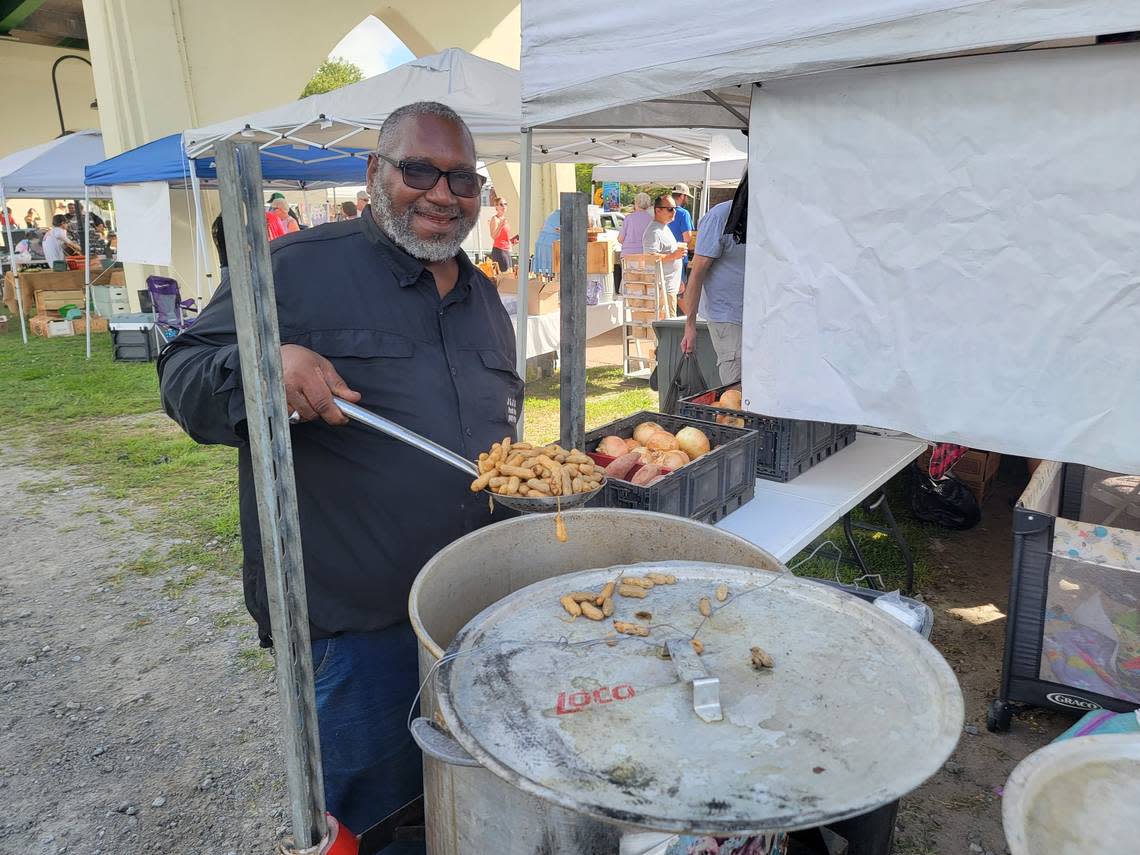Boiled peanut season in SC is here! These expert tips will help you make an amazing batch

Hot summer is the perfect time for cool treats like popsicles and ice cream.
But in South Carolina, soaring temperatures also mean it’s time for the state’s official snack: boiled peanuts. From ball games to road trips, the snack is a popular summer favorite.
Peanut Boiling Culture
Despite their name, peanuts aren’t actually nuts at all. The legumes grow well in South Carolina’s climate and the practice of boiling them is so beloved locally that in 2006 then-Governor Mark Sanford signed a law making boiled peanuts the state’s official snack food.
“People in this area have always boiled peanuts, and it’s about like the Loris Bog Off — everybody’s got their own recipe,” said state Agriculture Commission member Benjie Andrew. “I know several different ways to actually boil them. It’s just kind of according to whatever flavor you want.”
Like many locals, farmer Johnny Graham has been boiling peanuts since childhood.
“When I was a boy, my granddad used to boil peanuts,” Graham said. “We never sold them, but they grew them and we boiled them at home and I’ve always enjoyed it.”
As an owner and operator of J & J Farms, Graham has been growing, boiling and selling peanuts in the Myrtle Beach area for more than 20 years. His classic recipe uses a salty brine for boiling but more recently he’s introduced a spicier Cajun blend as well.
Different Flavors
The simplest recipes, like one published on the official Discover South Carolina website, just call for raw, in-shell peanuts, water and salt. But others experiment with spice blends for unique flavors.
If you’re interested in boiling your own batch, the first step is finding the right peanut. Look for green peanuts or raw peanuts at grocery stores, produce stands and farmers markets. Green here doesn’t actually mean green in color but fresh peanuts that haven’t yet been dehydrated. Raw peanuts are also uncooked, but unlike green peanuts they’ve been dried out and require the extra step of re-hydrating before boiling.
Next you’ll need to decide what to boil your peanuts in. While Graham keeps his recipes secret, he does have a recommended salt to legume ratio: 2 pounds of salt per bushel of peanuts. For a smaller batch, Discover South Carolina recommends three-fourths of a cup of salt for 2 to 3 pounds of in-shell peanuts.
If you want to get more creative, consider what flavors you enjoy with other foods and experiment with spice blends, herbs, dried peppers, sauces and more.
[People] may put crushed red pepper water while they boil [the peanuts] in the liquid, and it gives a little bit of a pepper taste, just seasons it up,” Andrew said. “Some people put seafood seasoning, like Old Bay … The older way would be salt and then they would put some type of cured meat inside the pot, like a ham hock or or a big piece of bacon that’s been cured, or something like that, to flavor [the peanuts].”
Where to Shop
While you can find raw and green peanuts in plenty of grocery stores around Horry County, if you’re in the market for peanuts that have already been boiled, consider looking for local options.
“You want to buy peanuts from a farmer-owned stand … if the sign says farmer-owned, then you know you’re going to get good peanuts,” Graham said.


